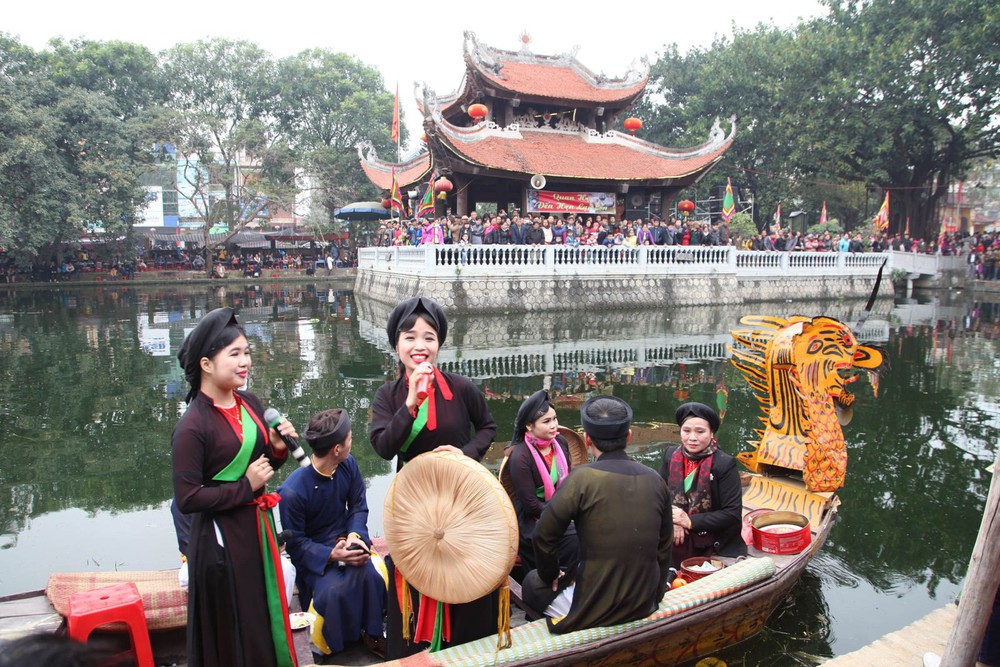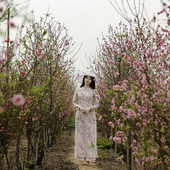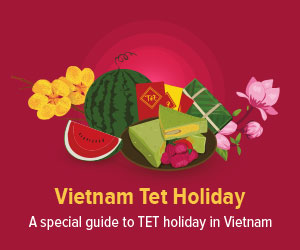Quan Ho - Melodies Of Love
As an antiphonal singing between men and women, QuanHọ is an artistic bridge between sensitive souls and young hearts. Singing Quan Ho is an interesting cultural activity enhancing social bonds between villages, a great way for young adults to get acquainted, expressing emotions and sending message of love.
As an antiphonal singing tradition between men and women, Quan Họ remains an artistic bridge connecting sensitive souls and youthful hearts. Engaging in Quan Họ singing is a unique cultural activity that enhances social bonds within communities, providing an exceptional avenue for young adults to connect, express emotions, and convey messages of love.
Quan Ho Singing – The Vocal Waltz
Soft, gentle, and romantic are the best descriptors for this form of repartee singing. These characteristics are evident not only in the lyrics or melodies of Quan Họ songs but also in the singing style, attire, and gestures of the participants. To some extent, Quan Họ can be seen as the “vocal waltz,” where graceful movements are replaced by refined singing voices.
 Quan Ho is typically performed by men and women exchanging thoughts and feelings.
Quan Ho is typically performed by men and women exchanging thoughts and feelings.
Most Quan Họ songs focus on love, expressing tender yearning in a gentle manner through soft, sweet melodies and modest yet implied lyrics. Liền anh (singing men) and Liền chị (singing women) take turns singing in a challenge-response format to send and receive sentiments. Typically, a pair of women (Liền chị) initiate with a “câu ra” (challenging phrase), and a pair of men (Liền anh) in the opposing group must respond with a “câu đối” (matched phrase), which harmonizes with the challenge phrase. Following this, the men challenge the women with a different song.
Quan Ho Singing at Village Festivals
Occasionally, Liền anh and Liền chị may sing for two to three days, performing hundreds of songs. It typically takes an individual at least a decade to memorize a substantial repertoire of Quan Họ songs to participate effectively in such extended performances. Moreover, this repartee singing demands creativity and quick responses from the participants. In various instances, Liền anh or Liền chị may challenge the opposing team with a “bài độc” (unique song or killer song) composed spontaneously. If the opposing team cannot respond immediately, they may arrange to reconnect at the next spring festival or another occasion to continue their lyrical exchanges.
Being a game that involves both genders, Quan Họ music and lyrics primarily revolve around romantic relationships, celebrating love and courting in subtle ways. These gatherings serve as a precious space for young men and women to showcase their charm and sophistication to one another, with the boys presenting themselves with elegance and the girls dazzling in their beauty.
Do some of these singers find love and live happily ever after? The answer remains largely uncertain.
The Forbidden Love
This form of antiphonal singing between men and women was historically viewed as a catalyst for love leading to marriage. Other types of repartee folk singing in Vietnam, such as “hát ví,” “hát giặm,” and “hát trống quân,” often serve this purpose. However, Quan Họ has been an exception to this trend.
Traditionally, marriages between Liền anh and Liền chị—especially those who hailed from interconnected villages—were largely prohibited. This unwritten rule served as an ethical standard in Quan Họ for many generations and has led to numerous heartaches.
Many cultural experts believe this strict guideline aimed to preserve the special artistic bond between Liền anh and Liền chị, as well as the essence of Quan Họ singing. The prevailing thought is that individuals only sing beautifully and soulfully when deeply in love; once married, the burdens of daily life can diminish that love, making the singing less captivating and emotional. If a Liền anh and Liền chị fall in love, they are limited to expressing their feelings in secret, meeting only a few times a year to convey their emotions through singing. The distance and time apart can deepen the love, enhancing their emotional connection during performances.
An Antiphonal Singing Tradition Between the Genders
Liền anh and Liền chị typically require ten years or more to memorize hundreds of Quan Họ songs before they can perform at festivals or singing events. Additionally, Quan Họ necessitates a unique repartee format between two pairs, not simply duets or groups. According to Lê Cần, a renowned Quan Họ artist dedicated to this tradition for over 50 years, it can take a decade or more to find a partner with a compatible voice and presence, practicing together to achieve harmony. Finding an equally skilled opposing pair requires patience and effort. Many believe that allowing marriage to intervene in this intricate art could undermine the quality of the singing that has been cultivated over many years. This stringent rule has thus been viewed as a means to safeguard both the enduring relationships and the artistry of the performances.
Lê Cần has observed that since his involvement in Quan Họ, he has yet to witness an incomplete love affair between Liền anh and Liền chị due to this rule. In recent years, this prohibition has diminished, and marriage between Liền anh and Liền chị is no longer forbidden.
Will Quan Họ lose its poetic essence without the ancient restrictions? That remains a topic of debate. However, the easing of this strict rule has undeniably brought joyful conclusions to many love stories between Liền anh and Liền chị.

11 Horoscopes In The Year Of The Dragon
The dragon year can be a booster-for-all for all other zodiacs.

Vietnam's 5 Most Important Festivals & Travel Tips
Vietnam's cultural richness stands out with a variety of traditional festivals.

Kinh People
Vietnam is known for its cultural diversity with 54 ethnic groups, in which, Kinh or Viet people accounts for nearly 90% of the whole population.






